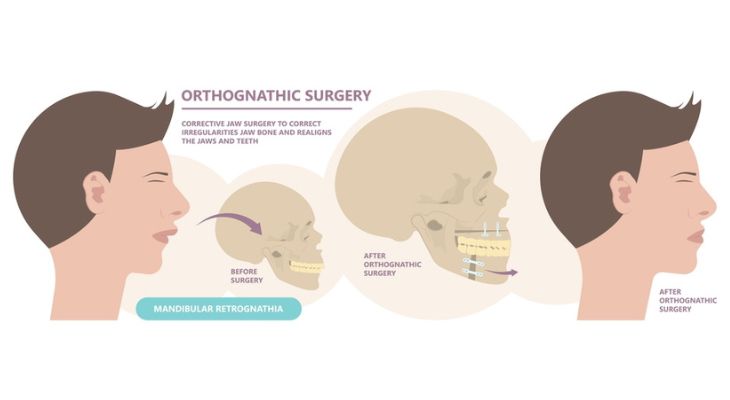
Orthognathic Surgery in Delhi – Achieve a Balanced, Pain-Free Smile
Do you experience discomfort, pain, or difficulty in daily activities due to jaw misalignment? Orthognathic surgery can be the solution to restore proper jaw function and enhance your overall facial harmony. This advanced surgical procedure corrects jaw discrepancies, improving chewing, speaking, and even breathing. By aligning your jaw properly, it not only alleviates pain but also enhances your facial aesthetics, boosting confidence and self-esteem.
At Veda Dentistry, we specialize in orthognathic surgery in Delhi, helping you regain comfort and functionality while achieving a well-proportioned and beautiful smile. Don’t let jaw misalignment affect your quality of life.
What Is Orthognathic Surgery?
Orthognathic surgery, also known as jaw correction surgery, involves repositioning the upper jaw (maxilla), lower jaw (mandible), or both to address significant misalignments. This procedure is designed for individuals whose jaw structure affects their bite, facial symmetry, or overall function.
In some cases, orthodontic treatment with braces may be required before or during the surgery to achieve optimal alignment. Orthognathic surgery is typically performed after jaw growth is complete—around 17 to 21 years for males and 14 to 16 years for females.
Benefits of Orthognathic Surgery
-
Enhanced Facial Aesthetics: Jaw surgery helps create facial symmetry and balance, resulting in a more harmonious and attractive appearance.
-
Improved Oral Function: Correcting jaw misalignments facilitates proper chewing, speaking, and breathing, significantly improving overall oral function and quality of life.
-
Relief from Pain and Discomfort: Jaw misalignment can cause chronic discomfort, including headaches, jaw popping, and difficulty eating. Orthognathic surgery addresses these issues, providing long-term relief.
-
Increased Confidence: By correcting jaw irregularities, the procedure enhances your facial features and smile, leading to greater self-assurance and a more positive self-image.
Types of Jaw Surgery in Delhi at Veda Dentistry
Depending on the specific condition, different types of orthognathic surgeries may be recommended:
1. Maxillary Osteotomy (Upper Jaw Surgery)
This procedure involves adjusting the upper jaw (maxilla) by making precise alterations to reposition it. The upper jaw, including teeth and palate, is moved as a single unit and secured with plates and screws. This surgery is used to correct:
-
Protruding or receding upper jaw
-
Crossbite or open bite
Excessive or insufficient tooth exposure
Midfacial hypoplasia (underdeveloped upper jaw, cheekbones, and eye socket)
2. Mandibular Osteotomy (Lower Jaw Surgery)
In this procedure, the lower jaw (mandible) is repositioned by making alterations behind the molars and along the jawbone. The jaw is moved as a whole unit and secured with screws and plates. This surgery is performed to correct:
-
A receding or protruding lower jaw
-
Misalignment affecting bite and facial symmetry
3. Genioplasty (Chin Surgery)
For individuals with a small or recessed chin, genioplasty is performed to reshape and reposition the chin. The chin bone is cut, moved forward, and fixed in place with screws and plates. This procedure is often combined with lower jaw surgery for enhanced facial balance.
Frequently Asked Questions
1. Is orthognathic surgery painful?
Patients may experience some discomfort after the procedure, but pain is managed effectively with prescribed medications. Swelling and mild soreness are common during the recovery period.
2. How long does it take to recover from orthognathic surgery?
Initial healing takes about 6 weeks, while complete recovery can take several months. Patients typically resume daily activities within a few weeks.
3. Will there be visible scars after surgery?
Since incisions are made inside the mouth, there are no visible external scars.
4. Are the results of orthognathic surgery permanent?
Yes, the results are long-lasting, provided that patients follow post-surgery care and orthodontic guidance.
5. How much does orthognathic surgery cost in Delhi?
The cost of jaw surgery varies based on several factors, including:
- Complexity of the procedure
Book an appointment with our expert dentist at Veda Dentistry to get more details on orthognathic surgery cost in Delhi.
- Pre-surgical orthodontic treatment
- Post-operative care requirements


Book An Appointment